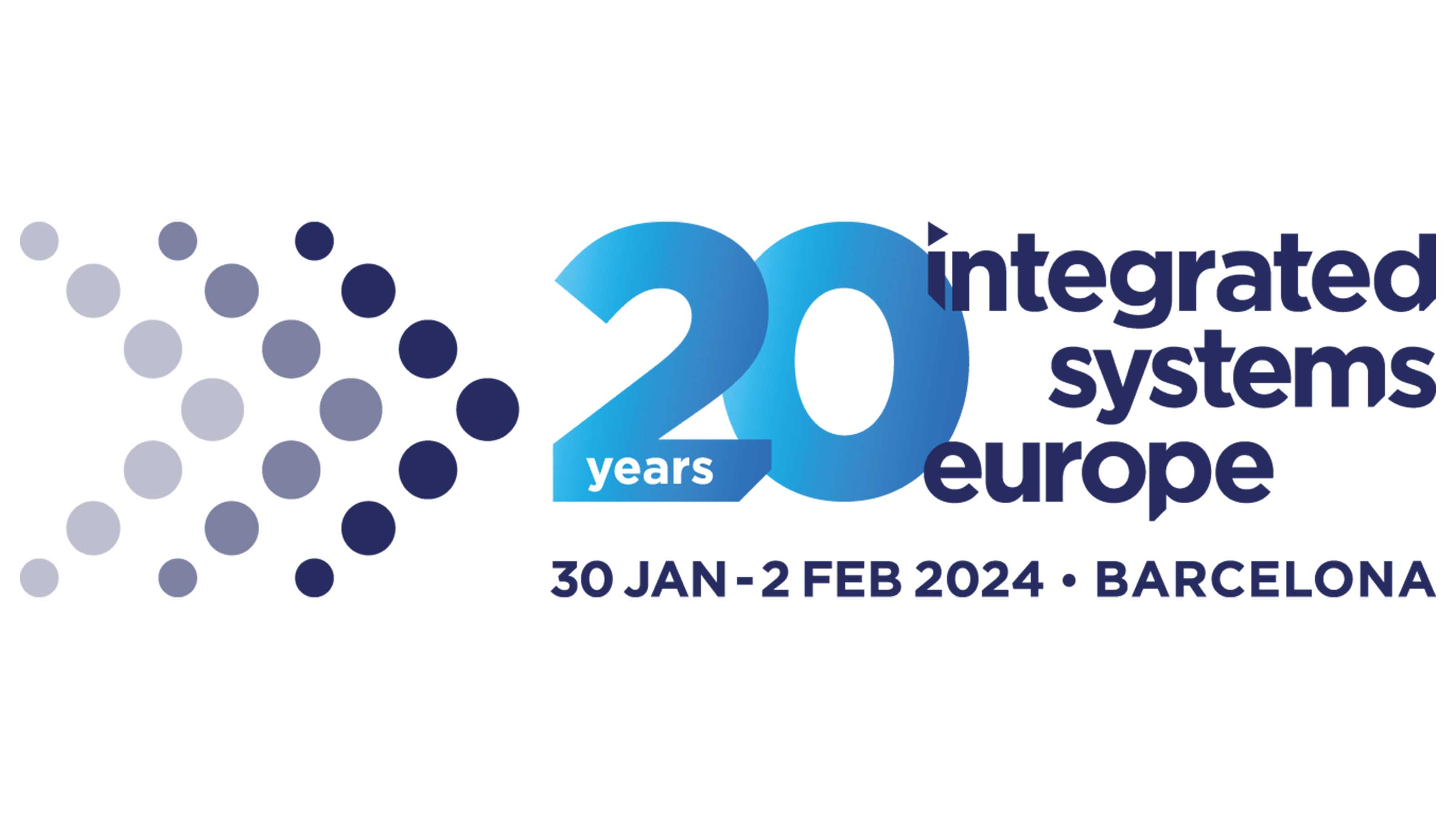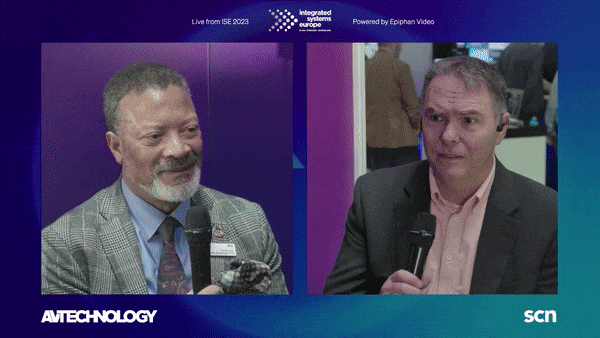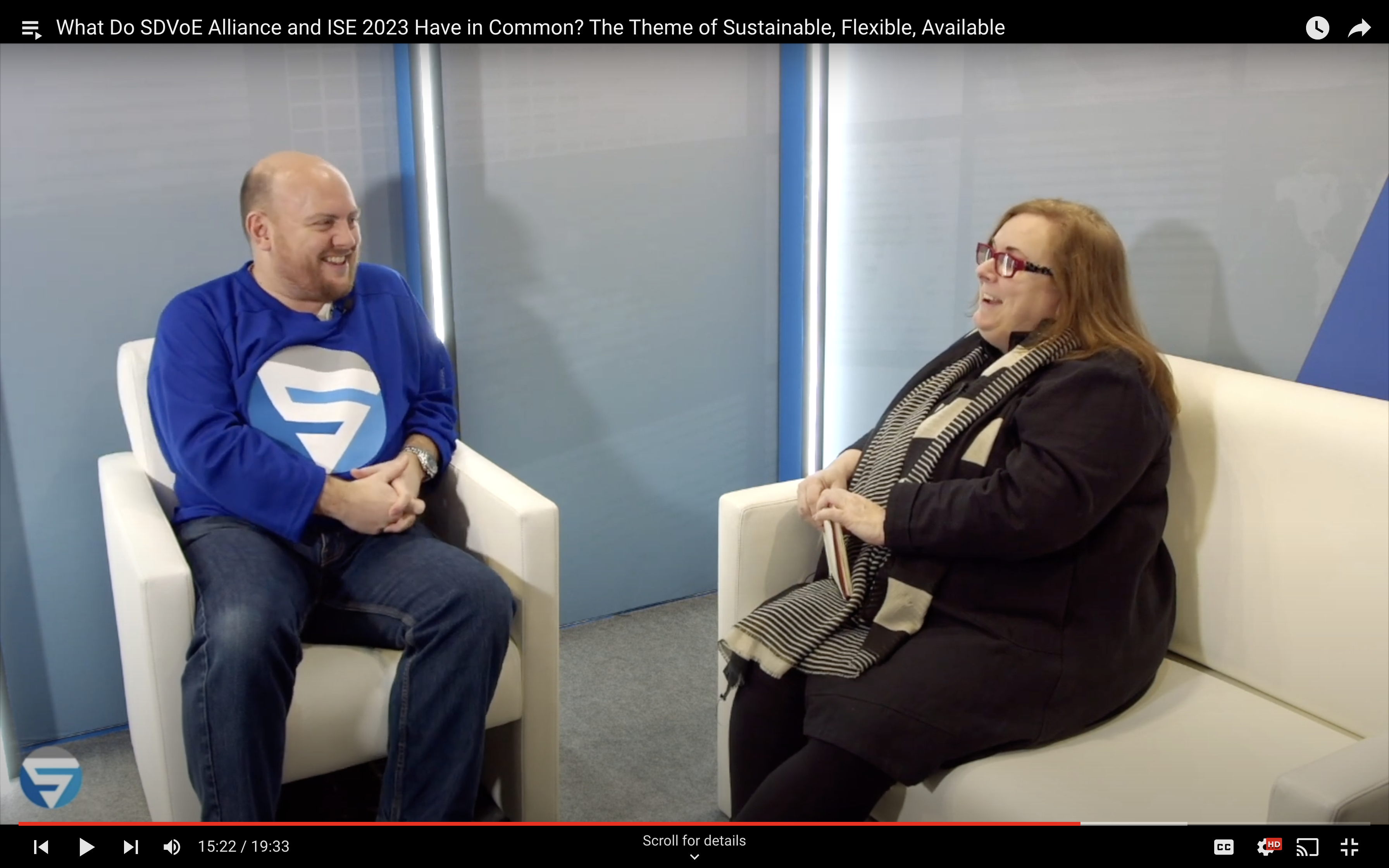Mike Blackman's journey with Integrated Systems Europe (ISE) from its inception to its 20th anniversary is a testament to the power of vision, dedication, and adaptability. Under his leadership, the show has played a pivotal role in shaping the Pro AV and systems integration landscape.
Blackman, the managing director of Integrated Systems Europe (ISE) and 2023 SCN Hall of Famer, looks back at the story behind the formation of ISE and his own journey over the decades.
ISE: A Pro AV Showcase Is Born
"The real first mover was Randy Lemke of InfoComm (later AVIXA)—he had the idea." While there had been previous InfoComm shows in Germany, in collaboration with the Photokina show and with exhibitors such as Kodak, Lemke recognized that the AV industry was changing, and a new exhibition was needed to cater for these changes. Lemke reached out to Billilynne Keller from CEDIA and Chuck Wilson from NSCA, and together they hatched the plan to create ISE.
Blackman's recruitment began with an approach by one of his old bosses (Cherif Moujabber), who was a headhunter. A diverse background—starting with aspirations of becoming an accountant, then working at the Financial Times, and eventually venturing into event and marketing consulting—paired with his expertise and passion for technology made him a perfect fit for the role. "I had the feeling that it was something that was going to grow; a marketplace was going to develop," Blackman recollected. "I saw more and more things that were becoming more intrinsic in our lifestyles and thought, 'This is going to be more and more important as time goes on.'"
In the Beginning: The Early Days of ISE
Blackman officially joined Integrated Systems Events in 2003, and the journey to launch the show began. In the early days, he had just two team members, Godwin Demicoli and a trainee. Together, they laid the groundwork for the inaugural event in January 2004. The team started small but with a big vision, and they gradually expanded as the show grew.
After using a logistics agency for a few years, the organization recruited Martine Niermans and Daniëlle Inostroza as the in-house operations team began to take shape. ISE was initially based in shared offices, but as it grew, they established their own presence. "The organization grew and grew, and we became stronger by having our own people rather than outsourcing too much," Blackman remembered.
In the marketing department, the team continued to expand with the addition of Dan Goldstein and Stefanie Span (formerly Hanel), who brought their expertise to enhance ISE's presence in the industry. Blackman's role as the public face of ISE was a deliberate decision due to the competitive nature of the three owner associations—InfoComm, CEDIA, and NSCA.
Save the Date: Deciding When and Where to Have ISE
One critical aspect of ISE's success is its choice of venue and date. Blackman revealed that the initial venue, Geneva, was chosen for its neutral location. The original venue selection "came about in 2002, before I was recruited," he said. It was Lemke and Moujabber who had toured various European cities to identify suitable locations.
However, exhibitors had to deal with Swiss import and export requirements; the clear message after the show was to move away from Geneva, based on logistical considerations. After a European road trip that Blackman undertook with Jason McGraw of InfoComm, Amsterdam became the new home for ISE, centrally located and accessible.
Lessons Learned: The First ISE
The inaugural ISE in Geneva wasn't without its challenges, but it provided valuable insights. Blackman recalled the anxiety around whether attendees would turn up and the pressure to prepare for the unexpected. Despite the initial struggles, they had strong exhibitor participation with 120 exhibitors and many other companies showing interest in the event.
"The first thing that happened was when we opened up registration," Blackman said. "Everything looked really good, and we had hundreds of people registering from far-flung places like Africa and we thought, ‘Wow, this show's going to be really international!’ As it was, about 3,500 people registered for the first show. No one came from Africa; we learned very quickly that shows like ours could be used to try to get visas for into Europe, and it changed the whole way in which we handled that for registration in the future.”
Evolution and Growth
ISE continued to evolve over the years. As the show expanded and matured, new areas and opportunities emerged. "You know, I've seen everything as evolution. Launching in Geneva was not a mistake," Blackman said. "It wasn't the right place to launch, but it helped because it kept the show neutral." Despite the challenges, every experience contributed to ISE's growth and success.
The Impact of ISE on Pro AV
Blackman noted that brands have adapted their programs to achieve maximum impact at ISE. “ISE provides the opportunity for companies to do market research with customers and potential customers to find out what they want and learn," Blackman explained. "Over the years, we’ve seen a change in the R&D process in that more and more companies are focusing their product launches for January, February. For display companies it makes a lot of sense because they're taking some equipment to CES in the U.S. and then shipping it straight to ISE afterwards. So, within a two-week window, they get the opportunity to launch products in two continents. We see the same for our pro audio companies as well. It helps them to present their products in the marketplace.”
Technology Zones and Clustering
As the show grew, the concept of Technology Zones emerged to help attendees navigate the vast array of offerings. "Everything was still mixed when we came back to Amsterdam in 2007 [after one year in Brussels in 2006]," Blackman said. "But we were starting to say, 'OK, how do we focus? How do we create growth in the other halls, and make it work to everyone's advantage?'"
These zones, such as the Content Production & Distribution Zone introduced in 2023, serve to group related technologies and make it easier for attendees to explore specific areas of interest. Exhibitors also benefit from being clustered together, fostering collaboration, and attracting visitors with complementary needs.
Post-COVID Bounce Back: The Resilience of Live Events
ISE, like many other organizers, explored virtual events as a response to the global lockdowns. However, it found that the virtual format did not fully meet exhibitor and attendee expectations. Virtual events lacked the immersive experience of physical shows, where attendees could spend days exploring innovations and building relationships.
"Our experience was that while virtual events can be satisfying for attendees, attendees are not coming out with new products, new contacts, and new sales that are generated from a physical event," Blackman said. "We had 20% of the visitors and exhibitors say that they had done some business with people they didn't know prior to the event."
ISE: Today and Beyond
As ISE celebrates its 20th anniversary, Blackman emphasizes the importance of in-person events and the value they provide to the industry. He sees ISE evolving in a way that incorporates a blend of physical and digital elements to cater to the needs of the modern world.
As ISE looks ahead to the next 20 years and beyond, one thing remains clear: the show will continue to be a driving force in the industry, shaping its future and bringing together professionals from around the world to celebrate the world of integrated systems technology.
"I see ISE as being even more important in the future," Blackman concluded. "I think the show is still going to be here in 20 years' time, but it will have evolved into something more. I see ISE influencing the industry to a greater extent and helping the industry to move forwards, which is what I've always wanted."


